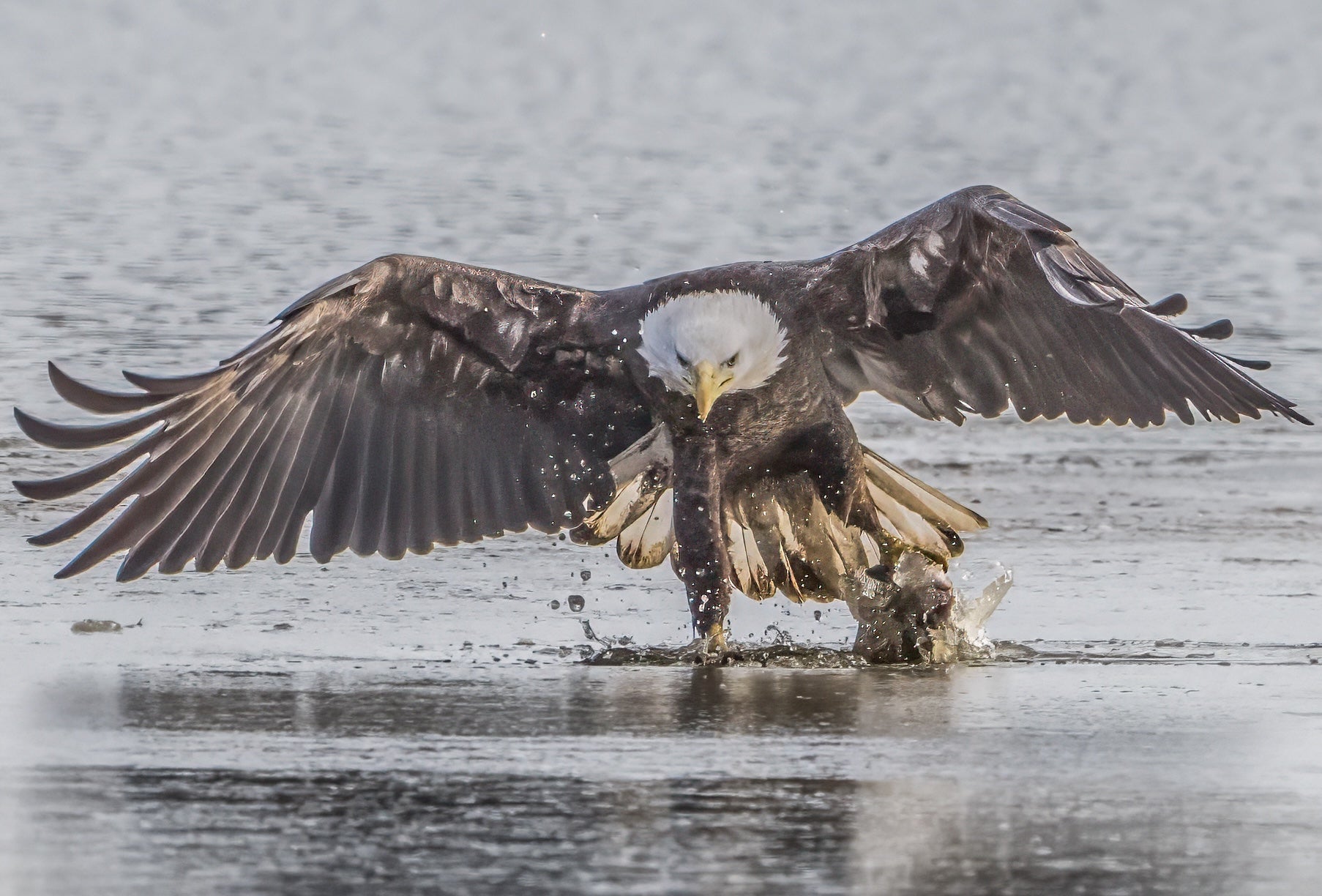New Jersey
Orsted delays 1st New Jersey wind farm until 2026; not ready to ‘walk away’ from project

OCEAN CITY, N.J. — Orsted, the global wind energy developer, says its first offshore wind farm in New Jersey will be delayed until 2026 due to supply chain issues, higher interest rates, and a failure so far to garner enough tax credits from the federal government.
The Danish company revealed the delay during an earnings conference call Wednesday, during which it said it could be forced to write off about $2.3 billion on U.S. projects that are worth less than they had been.
It also said it had considered simply abandoning the Ocean Wind I project off the southern New Jersey coast.
But Orsted still believes the wind farm, to be built in waters off of Atlantic City and Ocean City, will be profitable in the long run.
“As it stands today, we believe the best direction is to continue to invest in these projects,” said David Hardy, an executive vice president and CEO of the company’s North American operations. “It still is the better choice than walking away today.”
The company did not say when in 2026 its Ocean Wind I project will be fully operational, and a spokesperson could not say Thursday what the new timetable is. Previously, Orsted had said power would be flowing to customers sometime in 2025.
Orsted has federal approval for the Ocean Wind I project, and has state approval for a second New Jersey project, Ocean Wind II.
Land-based wind turbines in Atlantic City, N.J., turn on July 20, 2023. On Aug. 30, 2023, the offshore wind energy company Orsted said it is delaying its first offshore wind project in New Jersey until some time in 2026; it had previously been due to be completed by 2024. Credit: AP/Wayne Parry
However, during Wednesday’s call, the company said it is “reconfiguring” Ocean Wind II and its Skipjack Wind project off the coasts of Maryland and Delaware because they do not currently meet its projected financial standards. It did not give details of what that reconfiguration might entail.
Two other Orsted projects — Sunrise Wind off Montauk Point in New York, and Revolution Wind off Rhode Island — are also affected by the same negative forces requiring the New Jersey project to be delayed. But the New York and Rhode Island projects remain on schedule, the company said.
News of the delay was a blow to supporters of offshore wind in New Jersey, which is trying to become the capital of the nascent industry on the U.S. East Coast. It also offered new hope to foes of the technology.
Earlier this year, New Jersey Gov. Phil Murphy signed a law allowing Orsted to keep federal tax credits it otherwise would have been required to pass along to ratepayers. The governor said he acted to protect jobs the offshore wind industry will create.
Land-based wind turbines in Atlantic City, N.J., turn on July 20, 2023. On Aug. 30, 2023, the offshore wind energy company Orsted said it is delaying its first offshore wind project in New Jersey until some time in 2026; it had previously been due to be completed by 2024. Credit: AP/Wayne Parry

Republicans, who tend to oppose offshore wind in New Jersey and nationally, seized on the delay as further proof of what they consider the inherent unprofitability of the industry.
“It was a travesty when Gov. Murphy bailed out Orsted at the expense of New Jersey taxpayers the first time they threatened to walk away,” said Republican state Sen. Michael Testa. “I’m calling on the Murphy administration to state unequivocally that our residents will not be sold out for Orsted a second time. Supply chain issues and rising inflation prove that these projects are unsustainable and the cost of continuing these projects will be too much of a burden for our state to bear.”
A dozen environmental groups issued a joint statement in support of offshore wind, calling it essential to avoiding the worst effects of climate change caused by the burning of fossil fuels.
“Innovation and transformation take time when done correctly,” the statement read. “The offshore wind industry is not immune to the supply chain crisis. We stand united in our support for responsibly developed offshore wind to help New Jersey achieve 100% clean energy.”
Orsted said it has already invested $4 billion in its U.S. wind energy portfolio, which factored into its decision, at least for now, to stick with its proposed projects. The company plans to make a “final investment decision” on whether or not to go forward with U.S. projects, including one in New Jersey, by the end of this year or early next year.
——
Follow Wayne Parry on X, the social media platform formerly known as Twitter, at www.twitter.com/WayneParryAC

New Jersey
N.J. governor says violent crime is down across state

Watch CBS News
Be the first to know
Get browser notifications for breaking news, live events, and exclusive reporting.
New Jersey
New Jersey removes bald eagles from endangered species list as populations soar

This story is part of the WHYY News Climate Desk, bringing you news and solutions for our changing region.
From the Poconos to the Jersey Shore to the mouth of the Delaware Bay, what do you want to know about climate change? What would you like us to cover? Get in touch.
In the early 1980s, New Jersey was on the brink of losing its last remaining bald eagles. Only one nesting pair existed in the state, and their eggs weren’t hatching because of the lingering effects of the insecticide DDT, which was banned in 1972.
Following decades of restoration work, bald eagles now nest in every New Jersey county. This week, the state removed the bald eagle off its endangered species list — more than 17 years after the majestic bird was federally delisted.
“I’ve been around a long time and have not seen very many species delisted. So, it really is a very special thing,” said Kathy Clark, chief of the endangered and nongame species program at New Jersey Fish and Wildlife.
In 2024, New Jersey surveyed a record 293 nesting pairs of bald eagles, of which 264 laid eggs. Their highest numbers are found along the Delaware Bay, where protected marshlands and coastal creeks provide ideal habitats. The state was able to delist the species because their reproductive rate over multiple years reached sustainable levels.
The success story follows years of artificially incubating eggs, introducing eagle chicks from Canada, monitoring nests and educating the public.
“What this really shows is that big picture conservation is possible. It starts with an inspirational spark that causes a wide swath of people to care deeply, and then the work requires learning, effort and perseverance over the long term,” said Alex Ireland, president and CEO of the environmental group New Jersey Audubon. “It’s very important that we think about this proactively as we go forward. It is much better to conserve species before listing is ever required.”
Following the nationwide recovery of the bald eagle, starting in the Chesapeake Bay, the U.S. Fish and Wildlife Service delisted the predatory bird in 2007.
The national ban on DDT, as well as policies aiming to protect birds of prey, played a role in the eagles’ recovery, said Jason Weckstein, an ornithologist at the Academy of Natural Sciences of Drexel University.
“Eagles are an amazing success story. They went from being pretty rare — it was not something that you saw in the suburbs — and now, here in my neighborhood in Wynnewood, I see bald eagles all the time,” he said. “Look up, because there’s a good chance you’ll be able to see an eagle.”
However, several states did not immediately remove bald eagles from their own endangered species lists. For example, Pennsylvania made the move in 2014.
New Jersey
Burlington County, New Jersey, congregation raising historic church to avoid flooding

Doris Priest, a lifelong Burlington County resident, has watched countless landmarks in her community fade into the past.
But there’s one place she prays will endure: her beloved church.
“It’s a small church. It’s just quaint,” said Priest, who is the vice president of the Lumberton Historical Society.
That quaint church is Trinity Episcopal in Vincentown, New Jersey.
It was built in 1871 near the banks of the Rancocas Creek, where it’s stood firm ever since.
However, the growing threats of climate change could soon uproot it.
Priest said each year brings stronger storms and worsening flooding.
“I think it was 2003 we had 5 feet of water in the church,” Priest said. “We get very scared. It was devastating to walk in and everything was gone.”
According to climate risk data from Firststreet.org, more than 37,000 properties in Burlington County are at risk of major flooding over the next 30 years.
That’s why Trinity Episcopal Church is spending hundreds of thousands of dollars to replace and raise the 154-year-old foundation. The plan is to elevate it 4 feet in hopes of preventing future damage.
“In this country, we lose a lot of our history and that upsets me,” Priest said. “We’re trying to save history.”
The church will remain closed during construction, which is expected to be completed by Easter Sunday.
-

 Business1 week ago
Business1 week agoThese are the top 7 issues facing the struggling restaurant industry in 2025
-

 Culture1 week ago
Culture1 week agoThe 25 worst losses in college football history, including Baylor’s 2024 entry at Colorado
-

 Sports1 week ago
Sports1 week agoThe top out-of-contract players available as free transfers: Kimmich, De Bruyne, Van Dijk…
-

 Politics6 days ago
Politics6 days agoNew Orleans attacker had 'remote detonator' for explosives in French Quarter, Biden says
-

 Politics6 days ago
Politics6 days agoCarter's judicial picks reshaped the federal bench across the country
-

 Politics4 days ago
Politics4 days agoWho Are the Recipients of the Presidential Medal of Freedom?
-

 Health3 days ago
Health3 days agoOzempic ‘microdosing’ is the new weight-loss trend: Should you try it?
-

 World1 week ago
World1 week agoIvory Coast says French troops to leave country after decades


















